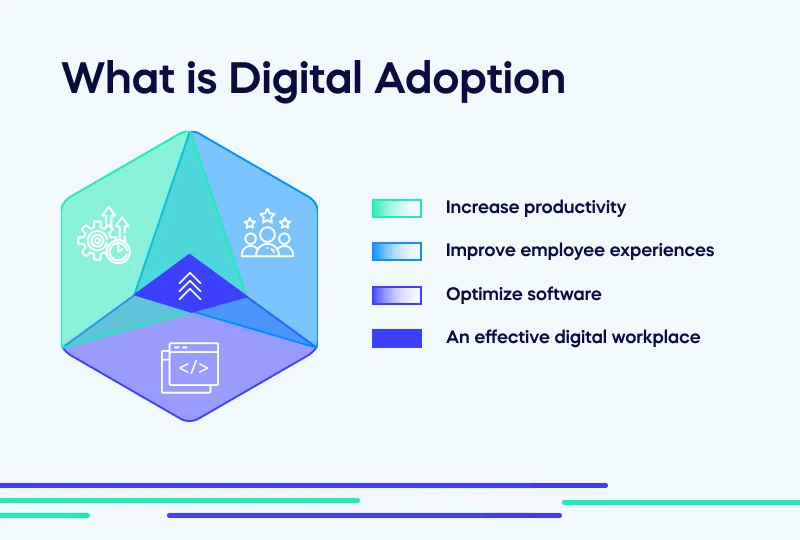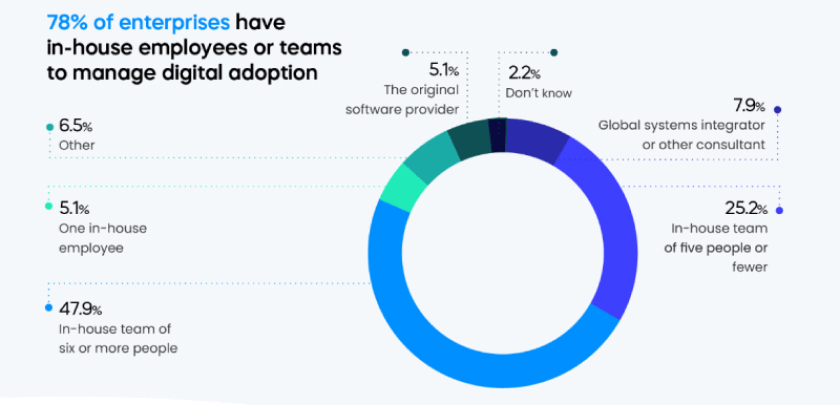What is Digital Adoption?
Digital adoption is the act of incorporating new digital tools and systems to improve work processes and achieve objectives. This includes using technology such as software, hardware, and online platforms in various industries to optimize operations, enhance communication, and promote innovation.

Digital adoption can further define the extent to which a user has become experienced and comfortable with the digital product or service and utilizes all its features and capabilities. Digital adoption requires users to understand the technology and its features, be familiar with the user interface, learn applicable business processes and workflows, and understand how to interact with the technology.
Today we see widespread digital adoption wherever we look, from coffee shop apps to video conference software, demonstrating that we are now in a digital adoption revolution. We experience cutting-edge new technology daily as countless users adopt new digital technologies. WalkMe’s 2022 State Of Digital Adoption report shows that 67% of companies are under extreme pressure to accelerate digital transformation via adoption. This communicates the need for digital adoption today.






